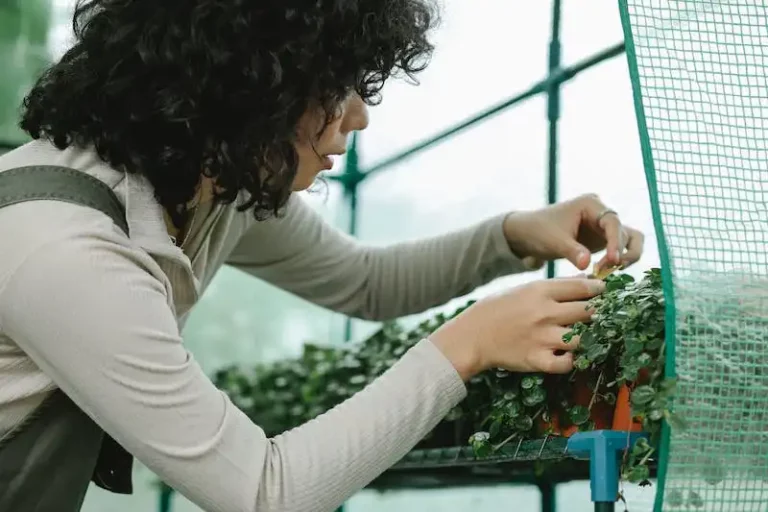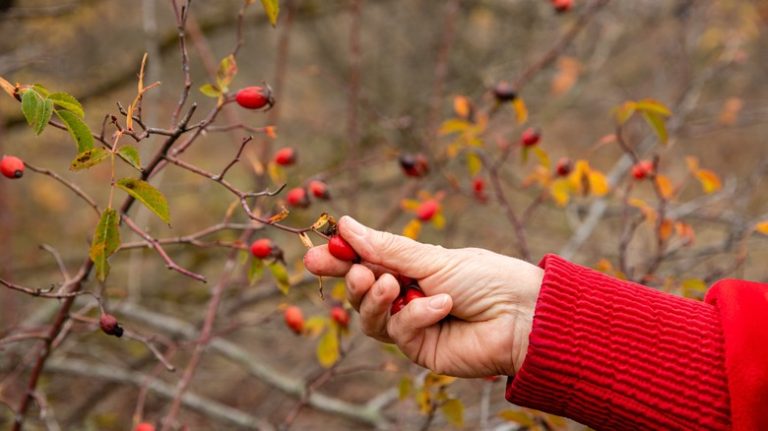When it comes to adding a touch of whimsy and softness to your garden, lamb’s ear is an excellent choice. This perennial plant, also known as Stachys byzantina, is a member of the mint family and is valued for its unique foliage and delicate flowers. With its soft, fuzzy leaves and vibrant blooms, lamb’s ear can add an element of texture and color to any garden or landscape design.
One of the best things about lamb’s ear is how easy it is to care for. This plant is highly drought-tolerant, making it an excellent choice for arid or dry areas. Its thick, silvery-gray leaves help it retain moisture, reducing the need for frequent watering. It can also tolerate heat and frost-free conditions, which makes it a versatile option for a variety of climates.
If you’re looking to create a low-maintenance garden, lamb’s ear is a great choice. It spreads easily, forming a dense ground cover that can help suppress weeds. Its compact size also makes it a suitable option for small gardens or containers. Plus, its resistance to various diseases and pests means you can spend less time worrying about plant care and more time enjoying your garden.
When it comes to cultivation, lamb’s ear can be started from seed or by transplanting existing plants. If planting from seed, start indoors in trays several weeks before the last frost date. Once seedlings have reached an appropriate size, they can be transplanted outside into a well-drained site. When transplanting, it’s important to backfill the hole and firm the soil around the roots to ensure proper establishment.
Another benefit of lamb’s ear is its ability to attract pollinators to the garden. Bees and butterflies are particularly drawn to the flowers, making lamb’s ear a great addition to a pollinator-friendly garden. If you’re looking to create a special focal point, consider planting lamb’s ear in the front or center of a flower bed, where its vibrant blooms and unique foliage can truly shine.
One common concern with lamb’s ear is its invasive potential. While some varieties of lamb’s ear can spread easily and may need occasional pruning to keep them in check, there are also non-invasive cultivars available, such as ‘Helene von Stein.’ This variety is more clump-forming and stays in a neat, tidy shape, making it a better option for those who want to avoid excessive spreading.
In conclusion, lamb’s ear is a versatile and low-maintenance plant that can bring a special touch to any garden. Its unique foliage and vibrant flowers are a joy to behold, and its resistance to drought and disease make it an excellent choice for those who want a plant that requires minimal care. Whether you’re looking to create a whimsical garden design or attract pollinators, lamb’s ear is sure to be a standout addition.
How to Plant and Grow Lamb’s Ear
If you’re looking to add an attractive and waterwise perennial to your garden, then lamb’s ear (Stachys byzantina) is a great choice. This plant is well known for its silvery-green leaves that resemble the soft ears of a lamb, hence its common name.
Here are the basics for growing lamb’s ear:
- Select a sunny spot in your garden, although lamb’s ear can tolerate some shade.
- Make sure the soil is well-draining, as this plant doesn’t like its roots to stay wet.
- Before planting, prepare the soil by removing any existing weeds or grass and loosening it up with a garden fork.
- Plant lamb’s ear in the ground in the spring, after the threat of frost has passed.
- Space the plants about 12 to 18 inches apart, as they can spread quite wide.
- Water the newly planted lamb’s ear regularly, particularly during dry periods, to promote healthy growth.
- Once established, lamb’s ear is quite drought-tolerant and doesn’t require much additional watering.
In addition to being a low-maintenance plant, lamb’s ear also produces tall spikes of flowers in the summer. These blooms are attractive to bees and butterflies, making lamb’s ear a great addition to a pollinator garden.
If you’re growing lamb’s ear in containers, make sure the pots have good drainage holes to prevent the roots from sitting in water. Water the container-grown plant whenever the top inch of soil feels dry to the touch.
When it comes to pruning lamb’s ear, you can simply remove any dead or diseased leaves to keep the plant looking tidy. However, pruning isn’t necessary for the overall health of the plant.
Lamb’s ear can be used in a variety of ways in the garden, from edging pathways to filling in gaps in flower beds or borders. Its silvery foliage provides a nice contrast to other plants in the garden and adds visual interest.
In summary, growing lamb’s ear is relatively easy, making it a popular choice for gardeners. Whether you’re a beginner or an experienced gardener, lamb’s ear is a versatile plant that can enhance the beauty of your garden.
What You’ll Learn
- Basics of growing and caring for Lamb’s Ear
- Planting Lamb’s Ear in the garden border
- Transplanting Lamb’s Ear and proper site selection
- Choosing the right soil amendments for Lamb’s Ear
- Managing the spread of Lamb’s Ear
- Growing Lamb’s Ear in containers
- Seed-starting Lamb’s Ear and necessary care
- Maintenance tips for Lamb’s Ear
- Common diseases and pests to watch out for
- Lamb’s Ear varieties and their characteristics
- The heat and frost-free preference of Lamb’s Ear
- Using Lamb’s Ear as a groundcover or border plant
- Attracting bees and other pollinators with Lamb’s Ear
- What Lamb’s Ear flowers look like
- The silvery-green foliage of Lamb’s Ear
- How Lamb’s Ear can add texture and interest to the garden
- Understanding the growth habit of Lamb’s Ear
- Choosing the right planting zones for Lamb’s Ear
- The risk of fungal diseases and how to prevent them
- Using Lamb’s Ear as a reference for other plants
Cultivation and History
Lamb’s ear (Stachys byzantina) is a quick and attractive perennial plant that is commonly grown in gardens. It is a waterwise plant with silvery-green, fuzzy foliage, making it a good choice for dry climates and xeriscape gardens. It is a low-maintenance plant that only needs watering during dry periods, making it an excellent choice for busy gardeners.
Lamb’s ear is usually grown as a ground cover, but it can also be used to create fluffy borders or as an accent plant in containers. It is a versatile plant that thrives in a wide range of growing conditions, including full sun to partial shade. Whether you want to use lamb’s ear as a border plant or as a flowering carpet, it will add texture and interest to your garden.
One of the most attractive features of lamb’s ear is its flowering time. The plant produces small, insignificant flowers on tall stalks, usually in the summer. Although the flowers are less showy than the foliage, they can still add a burst of color to the garden.
Lamb’s ear is a natural choice for a cottage garden or a rustic-style garden. It can be planted in rows to create neat lines or used to fill in gaps between other plants. Its soft and fuzzy foliage provides a nice contrast to the big, bold leaves of other plants.
If you’re looking for a plant that is easy to grow and has many uses, lamb’s ear is a great choice. It can be grown as a ground cover, a border plant, or a container plant. It can be used to create a carpet of fuzzy foliage or to add texture to a garden. It can be used in formal or informal gardens. Lamb’s ear is a versatile plant that can be used in many different ways. It is also a good plant for attracting pollinators, such as bees and butterflies.
In recent years, there has been a renewed interest in lamb’s ear due to its drought-tolerant properties. As water becomes an increasingly scarce resource, gardeners are looking for plants that can survive with less water. Lamb’s ear fits the bill perfectly. Its thick, fuzzy leaves help to conserve moisture, making it an ideal plant for dry conditions.
In colder zones, lamb’s ear may die back during the winter, but it often comes back in the spring. It can also be grown as an annual in frost-free areas. Lamb’s ear is a hardy plant that can tolerate a wide range of growing conditions.
If you’re interested in growing lamb’s ear, there are a few basics you should know. The plant is best grown from division or root cuttings. It can also be grown from seed, but this method is less reliable. Lamb’s ear is a clump-forming plant, which means it tends to spread and form dense mats of foliage. To prevent overcrowding, it’s a good idea to divide lamb’s ear every few years.
Lamb’s ear has many uses in the garden. It can be used as a ground cover to create a carpet of silvery-green foliage. It can be used as a border plant to add texture and interest to a garden. It can be used in containers to provide a vertical accent or to soften the edges. Whether you’re a beginner gardener or an experienced landscaper, there is a place for lamb’s ear in your garden.
Propagation
Lamb’s Ear plants can be propagated through various methods, including division and seed sowing.
If you want to propagate Lamb’s Ear through division, start by selecting a mature plant that has finished flowering. Gently dig down around the base of the plant to loosen the soil and lift the entire plant out of the ground. Carefully separate the clumps of plants, making sure each division has some roots attached. Replant the divisions in well-drained soil, spacing them apart to allow for growth. Water the newly transplanted divisions well and keep them watered regularly until established.
Another option for propagating Lamb’s Ear is through seed sowing. Collect the seeds from the flowers when they have finished blooming. Spread them out on a dry paper towel and allow them to dry completely. Once dry, you can sow the seeds directly into the garden or in containers. Make sure the soil is well-drained and amend it with organic matter if necessary. Lightly cover the seeds with soil and water gently. Keep the soil consistently moist, and in a few weeks, you should see the seedlings start to emerge.
Lamb’s Ear has the natural habit of spreading and can become quite invasive in some garden settings. To control its spread, you may want to consider planting it in containers or in areas where it can be easily contained such as the front of borders or in a designated section of your garden.
Propagation through division and seed sowing is a quick and easy way to create more Lamb’s Ear plants in your garden. By learning these propagation techniques, you can ensure that your garden is always filled with these attractive, fuzzy-leaved plants.




